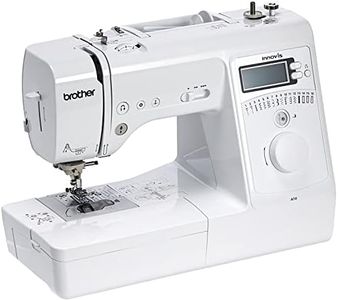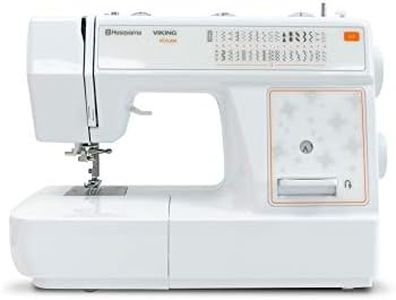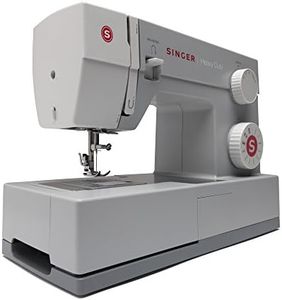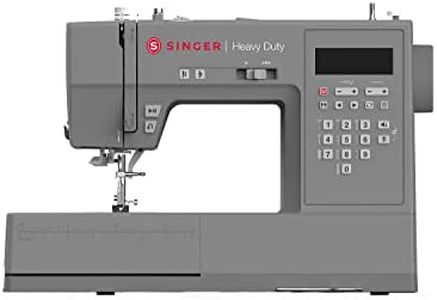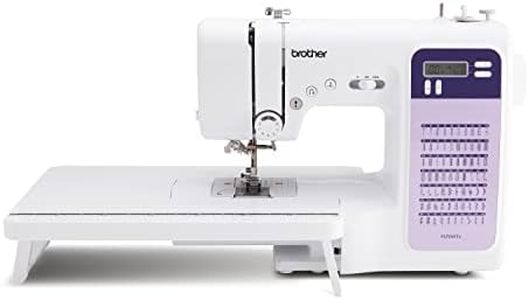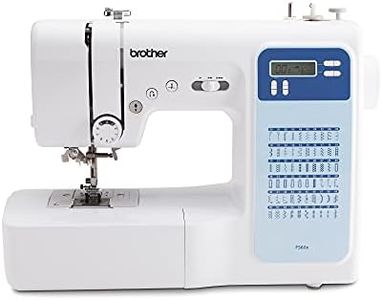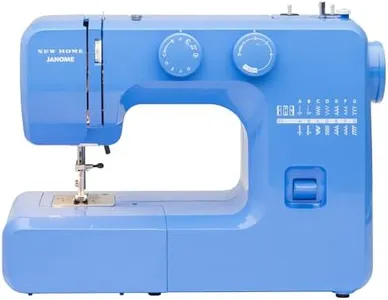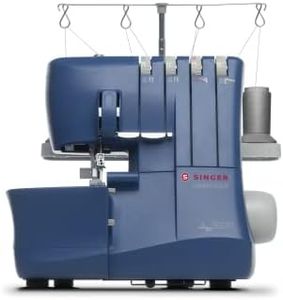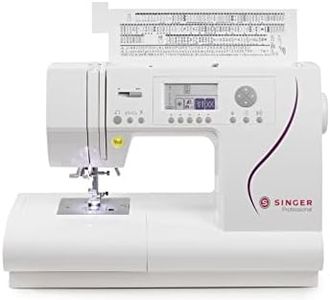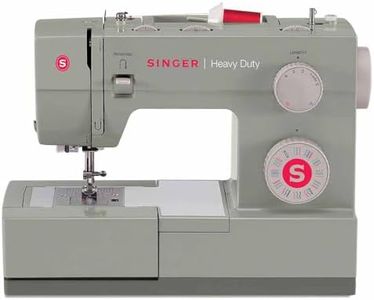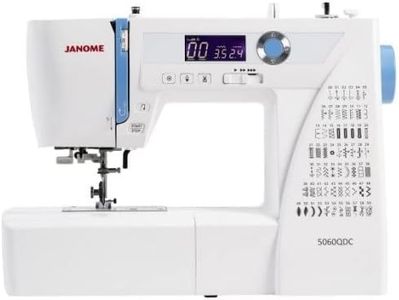We Use CookiesWe use cookies to enhance the security, performance,
functionality and for analytical and promotional activities. By continuing to browse this site you
are agreeing to our privacy policy
10 Best Intermediate Sewing Machine
From leading brands and best sellers available on the web.Buying Guide for the Best Intermediate Sewing Machine
Choosing an intermediate sewing machine is an exciting step up from beginner models. At this stage, you may want more features, better durability, and greater versatility. The right choice depends on your sewing interests—whether you're making clothes, quilts, crafts, or repairing household items—and how much you're looking to grow your skills. Becoming familiar with the most important features can help you focus on what will suit your needs and keep you happy as your abilities progress.Stitch SelectionStitch selection refers to the variety and types of stitches a machine can perform. This is important because more stitches give you greater creative flexibility for different projects—like straight, zigzag, decorative, and stretch stitches. Basic machines may offer just a few stitches, while intermediate models can have from a dozen to fifty or more. If you plan to experiment with different fabric types or do decorative work, consider a machine with a wider stitch selection. However, if you work mostly on simple, functional sewing, a moderate range should suffice.
Buttonhole FunctionA buttonhole function is a setting or series of settings that automate the process of making a buttonhole. This is important for garment making or home decor projects requiring buttons. Entry-level machines may have a four-step manual process, while more advanced ones handle buttonholes in a single step. If you want speed and convenience, especially on clothing projects, look for a one-step buttonhole feature. For occasional use, a multi-step process can still deliver quality results with a bit more practice.
Speed ControlSpeed control allows you to adjust how fast or slow the machine stitches. This is useful for gaining precision on tricky areas or for working quickly on straight seams. Machines with variable speed control (like a slider or digital setting) let you match the pace to your skill and project: slower for corners and curves, faster for long straight lines. Consider this feature if you value control or want to prevent mistakes, especially when working with delicate fabrics or complex pieces.
Automatic Needle ThreaderAn automatic needle threader is a feature that helps you quickly and easily get the thread through the needle's eye. This is especially helpful if you have difficulty threading by hand, want to save time, or frequently change thread colors. Some intermediate machines have a simple lever or mechanism for this. Choose this feature for convenience, particularly if vision or steady hands are a concern, or if you expect to work with multiple thread changes on a regular basis.
Adjustable Presser Foot PressurePresser foot pressure determines how firmly the foot holds fabric against the feed dogs (the moving surface under the fabric). Being able to adjust this is important for handling various fabric types—heavy denim needs more pressure, while delicate silks do better with less. Intermediate machines sometimes offer a dial or switch for this. If you want to sew a wide variety of materials or experiment with tricky fabrics, look for a machine with adjustable presser foot pressure.
Built-in Needle PositionsNeedle position refers to the ability to move the needle left, right, or center. This gives you flexibility for tasks like topstitching, inserting zippers, or sewing close to fabric edges. Basic machines may offer only a fixed position, while intermediate models provide multiple options. If you plan to tackle creative or detail-heavy projects, having adjustable needle positions increases your accuracy and versatility.
Free Arm CapabilityA free arm is a part of the machine that allows you to easily sew cylindrical or small areas like sleeves, cuffs, and pant hems. This is achieved by removing part of the accessory tray, exposing a smaller work surface. It's particularly helpful for garment making or working on children's clothing. If these projects are important to you, ensure the machine has a free arm feature.
Feed Dog AdjustmentFeed dogs are the small metal teeth under the presser foot that pull the fabric through as you sew. Adjusting or dropping the feed dogs lets you do free-motion stitching, quilting, or embroidery. Not all machines allow this. If you envision doing quilting or creative embroidery by hand-guiding your projects, pick a model with feed dog adjustment for maximum versatility.
